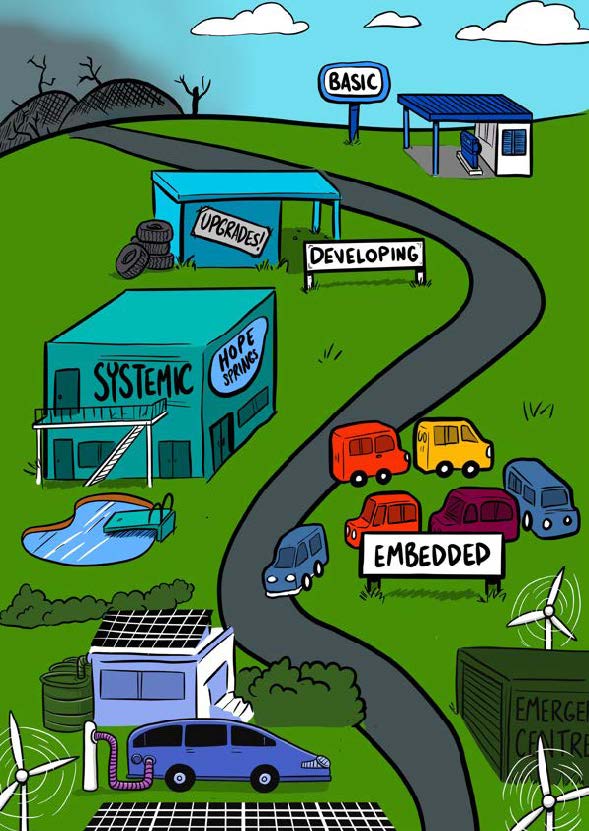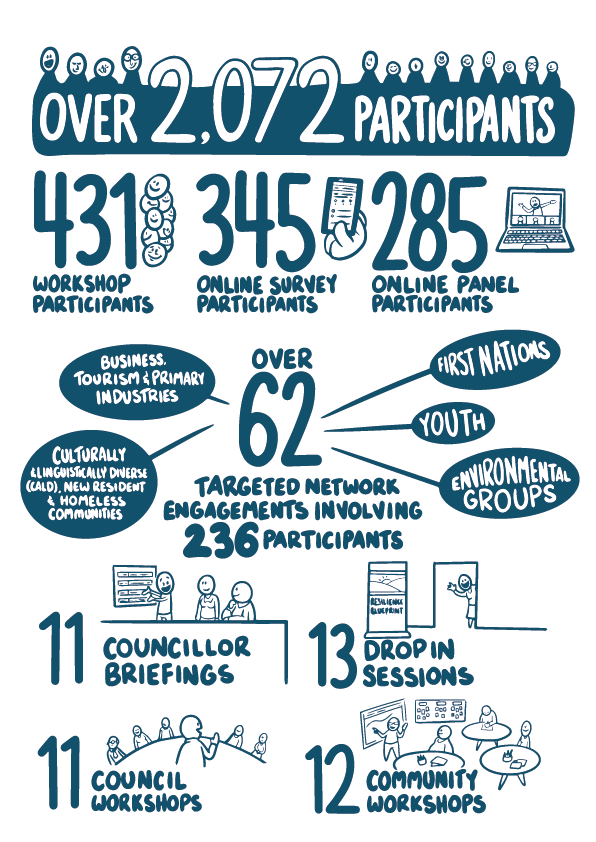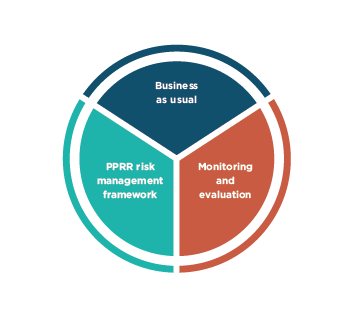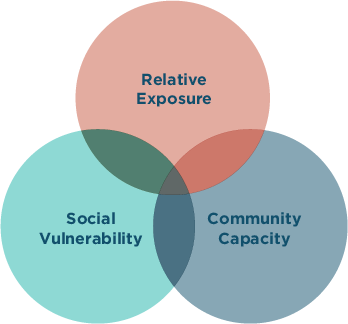Home » Walking the Journey
Walking the Journey
Resilience is a journey, and our resilience journeys are as unique as we are. The Resilience Blueprint was developed with input from over 2000 local participants across South East NSW, recognising the diversity of lived experience, as well as the knowledge and insights of those who call this region home.
This section begins with a link to a timeline of disasters that have occurred within the region, before moving on to the co-developed statement of resilience (which was defined by every participant involved in the development of the Blueprint), the process for how the Blueprint was developed, and ending with suggestions for how to use the Resilience Blueprint within your own journey.
Our Journey of ‘Resilience’
How the Blueprint Was Developed
Using The Blueprint
Maturing Our Resilience Journey
Our Journey of ‘Resilience’
Our views on ‘resilience’ in South East NSW are born of a long history of experience with different natural hazard events. The South East is a region of drought, fire and flooding rain. Landslides, heatwaves, earthquakes, coastal hazards, disease outbreaks and biosecurity also present risks across the region.
Not all natural hazard events are disasters. How the landscape operates, its natural processes and climatic and weather factors can be perceived as hazards. Resilience is also about having empathy with and respecting the landscape and its natural functions. Indigenous knowledge of the region extends back many tens of thousands of years, as the first inhabitants. Over this period, Country has changed. Weather and natural processes, along with climatic shifts, have shaped South East NSW.
The term ‘resilience’ raises different thoughts, emotions and reactions. It means different things to different people. It is often associated with how we ‘stand up’ to an event, or how we are tested, endure and withstand. Whilst it is those things, it involves more.
Whilst we often hear the term ‘resilience’ used after a disaster, we need to think of it in different contexts. Part of our need to adapt to a changing world is the increasing frequency and consecutive nature of events. The cascading nature of risks stemming from cumulative events brings new challenges. There are also opportunities to catalyse a more resilient future.
How we view the term ‘resilience’ and how we each characterise it is defined by our own lived experiences, values and knowledge.
Across South East NSW, we define our resilience across the dimensions of:
- being forward-thinking
- anticipating change
- investing in proactive effort.
Moving Along the Resilience Journey
Our resilience journeys are as unique as we are. We start at different points, go at different speeds and focus on different priorities as we progress. As we grow and build on our resilience opportunities over time, the more transformative our approaches become.
Resilience is a journey. We may feel more resilient to different challenges at different times in our lives.
Surveys across the region1 show climate change and adaptation are high priorities for communities. We have experienced climate-driven disasters of an extreme scale here. in South East NSW. Building our resilience to a changing global climate, and global warming, is front of mind.
Equally apparent are the sustainability challenges of the economic dimension of disaster impacts. Deloitte Access Economics (2022) models the total economic costs of disasters in NSW from 2020-2060 to be between $320-$391 billion, depending on emissions scenarios. Even in a low emissions scenario, this is a cost to NSW that is unsustainable.
Working together, we have the opportunity to move forward along our resilience journeys. We can harness opportunities and proactively fill emergent gaps in the face of a range of stresses and shocks that may affect us, to be better placed when they occur.
How the Blueprint Was Developed
The South East NSW Resilience Blueprint was developed following the devastating 2019/20 Black Summer bushfires and onset of the COVID-19 global pandemic, both of which have had enduring impacts on communities across the region.
The Blueprint is co-designed through a partnership approach that involves community, business and government, across different disciplines, interests and sectors.
The co-design process across South East NSW led to the identification of five key attributes of the Resilience Blueprint. These are that it:
- addresses climate change as a priority
- is grounded in lessons learnt
- has key decision-maker support
- is developed collaboratively with councils and communities
- aligns with Commonwealth, state and local government initiatives.
The co-design and Blueprint development processes gathered insights, experiences, knowledge and perspectives from a broad spectrum of community leaders and representatives, knowledge specialists, researchers, First Nations, local businesses, not for profits and non-government organisations, youth groups, generational land holders and representatives from across all levels of government. All with different but deep commitments to the wellbeing of South East NSW.
Resilience Blueprint Engagement Snapshot:
WORKING WITH THE ACT GOVERNMENT
There is a history of strong collaboration between Australian Capital Territory (ACT) Government and local and state government in NSW on emergency management and climate change preparedness. It has been a regular feature of the ACT-NSW Memorandum of Understanding for Regional Collaboration over multiple years, through the NSW Office of the Cross-Border Commissioner, Department of Regional NSW and the Chief Minister, Treasury and Economic Development Directorate (CMTEDD).
The ACT Government has contributed to the shaping of the Resilience Blueprint from inception and with collaboration from the Regional Policy and Wellbeing teams within CMTEDD, the ACT Emergency Services Agency, Climate Change Policy and the Office of Climate Action. The ACT Government is an associate member of the Canberra Region Joint Organisation and is also represented on the NSW Risk and Resilience working group which is the Advisory group to Resilience Blueprint.
The Resilience Blueprint aligns with the ACT Climate Change Adaptation Strategy 2016 which identifies actions associated with similar system environments, and towards that of the 2018 ACT Longitudinal Survey on Climate Change which measured the climate resilience of ACT residents and the Canberra University Regional Wellbeing Survey. The Resilience Blueprint will continue to build on the strong collaboration foundation that currently exists and will continue to seek opportunities to enhance the resilience of communities in both the ACT and the SE region.
Supporting this comprehensive co-design and Blueprint development process is an analysis of available climate risk data for each local government area, forming part of the resilience assessment. This not only considers long-term natural hazard-related climate projections but an analysis of event likelihood and vulnerability so that we can better understand our potential risk profile across South East NSW.
The local perspectives and analysis of available climate risk data elements informing the resilience assessment within Blueprint are matched by taking a resilience lens to our social, economic, built and natural environment, and governance systems.
A number of resilience methodologies are leveraged by the Resilience Blueprint to derive a bespoke but technically robust approach to contemplating our region’s resilience drivers. The national and international frameworks which have contributed to the South East NSW Resilience Blueprint delivery approach include:
- CSIRO’s RAPTA process
- Australian Institute of Disaster Resilience (AIDR) Adaptive Learning process
- Minderoo Foundation’s Community Resilience Framework
- Resilient Cities Network City Resilience Framework
- Organisation for Economic Co-operation and Development (OECD) Guidelines for Resilience Systems Analysis.
Using the Blueprint
- The Blueprint may be used different in different contexts and by different stakeholders for a variety of resilience purposes.
- Over time, the Blueprint will navigate across separate spheres of influence. The first being the influence of dynamic elements of communities, economies and landscapes, and the changing risk and resilience context these generate. The second is the direct influence of the function of the Blueprint in addressing the priorities and strategies to support South East NSW to adapt to a changing world.
- Measuring these influences and dynamic systems through implementation pathways, by identified indicator metrics, allows us the opportunity to:
- track our resilience successes over time
- understand when to consider intervention options, and how they might be undertaken (trigger points for resilience step-change)
- how communities and system processes are tracking along the resilience journey
- how resilience is being maintained, modified and transformed to meet new needs and changed circumstances
- when adaptive governance approaches are required.
Figure 28 – Evolving cycles of influence and implementation as part of continuous improvement
Applying a resilience lens to everything we do enables up to unlock opportunities and achieve enhanced and coordinated outcomes for aspects like risk avoidance and mitigation, climate adaptation, socio-economic prosperity and ecosystem and biodiversity health.
Investment in resilience reduces the economic and social impacts of disasters and promotes better outcomes for people and communities (Deloitte, 2022).
Benefits for Local Government

Locally and regionally specific risk and resilience data availability

Support for embedding resilience into operations, processes and decision-making

Enhanced foundations for resilience capability and capacity

An evidence base to underpin needs for betterment and building back better

Metrics for monitoring, evaluation and adaptation

Identified resilience priorities and strategies for funding

An advocacy platform to facilitate systemic change
Benefits for Households and Communities

Greater understanding of risks to support preparedness

Awareness of stress factors for communities, and how these amplify and influence the impacts of natural hazard events

Enhanced foundations for resilience capability and capacity
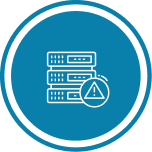
Transparency on roles and responsibilities in resilience

Clarity with regard to the contribution organisations, services and businesses can make

Clarity with regard to the contribution individuals, households and communities can make

An understanding of the collective objectives that different parties are working toward that make ‘resilience’ tangible
Benefits for Organisations, Services, Businesses and the Private Sector

Articulation of the resilience challenges which require specialist focus

Risk and resilience factors that are relevant for service continuity planning
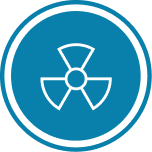
Enhanced foundations for resilience capability and capacity

Opportunities to drive toward enterprise and industry resilience

Clarity with regard to the contribution organisations, services and businesses can make

Identified resilience priorities and strategies for funding

An advocacy platform to facilitate systemic change
Benefits for State and Federal Government

Locally and regionally specific risk and resilience data and intelligence

Clarity on the risk and resilience challenges and opportunities specific to South East NSW
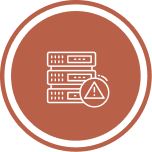
An evidence base to underpin future recovery and reconstruction priorities

Opportunities to drive toward enterprise and industry resilience

Insight with regard to the systemic interrelationships across risk and resilience dimensions

Pre-identified resilience priorities and strategies to align funding to need

A foundation for the consideration of improvements to enhance innovation
Maturing Our Resilience Journey
The Resilience Blueprint implementation framework comprises three pathways:
- state and local government ‘prevent, prepare, respond, recover’ (PPRR) risk management frameworks
- resilience embedding processes into business as usual
- monitoring and evaluation practices.
Figure 29 – Resilience Blueprint implementation pathways
The Canberra Region Joint Organisation will lead the initial phases of region-wide implementation, working with stakeholders to navigate their forward journey with the assistance of the Resilience Blueprint and its resilience directions framework.
Over time, the implementation pathways will enable an integrated approach, where resilience is calibrated as part of business as usual processes, providing for the succession and sustainability of effort over time across government and other activities.
Implementation Framework
Delivery of the Resilience Blueprint requires collective effort, in contribution to regional aspirations. To achieve this, and acknowledge the different resilience roles, responsibilities, journeys and needs involved across the region, the ‘directions framework’ of the Blueprint is designed to enable opportunities that can be explored and taken forward to embed as part of day-to-day processes.
This allows a quantum of effort to be untaken by different people and organisations, in different ways and at different times, in the knowledge it is contributing towards collective regional resilience outcomes.
The directions framework spans five (5) system environments and is supported by:
15 resilience themes
30 priorities
168 strategies.
A suite of tools and defined indicator metrics are provided to support implementation at all levels.
The strategies contained within the directions framework enable everyone with a role to play to identify those opportunities that are relevant to their context, allowing an adaptable framework whether for state or local government, the private sector, community groups or households.
Over time, the implementation pathways will enable an integrated approach, where resilience is calibrated as part of business as usual processes, providing for the succession and sustainability of effort over time across government and other activities.
PRRR Risk Management Frameworks and Processes
The principles for emergency management in NSW under the EMPLAN is based upon a comprehensive ‘prevention, preparation, response, recovery’ framework model that also links with the NSW Resilience Plan.
PPRR approaches are adopted by all agencies with responsibilities under EMPLAN in NSW and in this way, it filters across many different aspects of emergency management and disaster risk reduction. It involves:
Prevention: to eliminate or reduce the level of the risk or severity of emergencies
Preparation: to enhance capacity of agencies and communities to cope with the consequences of emergencies
Response: to ensure the immediate consequences of emergencies to communities are minimised
Recovery: measures which support individuals and communities affected by emergencies in the reconstruction of physical infrastructure and restoration of physical, emotional, environmental and economic well-being.
Using PPRR approaches as a vehicle for implementation of the directions of the Resilience Blueprint for those with a legislative and regulatory role in emergency management provides a key pathway towards step change over time.
Resilience Embedding
The embedding process of the Resilience Blueprint is focused on mapping the opportunities to embed the resilience directions in decision-making.
This implementation pathway is funded by Bushfire Community Recovery and Resilience Fund and the Bushfire Local Economic Recovery Fund, as the next phase of delivery of the Resilience Blueprint project.
The embedding process will work with stakeholders including local governments and communities around how we take the directions of Resilience Blueprint and apply it to address specific local circumstances. It will support councils to develop local IP&R integration plans that work towards resilience implementation over time, identifying where funding is required and outlining the resilience case for efforts.
Resilience embedding approaches and local action plans will consider elements of:
control, influence and advocacy
immediate, medium and long-term transformation efforts
activities that:
maintain momentum
modify resilience outcomes
contribute to transformational change where it is required.
Monitoring and Evaluation Practices
In South East NSW, we will know we are enhancing our resilience when we: In people and communities:
have a greater understanding of risk
are recognising lessons learned as opportunities to grow resilience
are empowering people and communities to have a role
are harnessing local solutions to local issues.
In Governance Processes:
establishing evidence in the context of community values and commitments, and available funds and resources
ensure decision-making processes and priorities are informed by risk-based evidence
are adopting coordinated and collaborative approaches
have adaptive governance that flexes with changed circumstances
see funding directed to resilience needs.
This will require behavioural changes that adopt resilience as a cornerstone mindset across everything we do.
To track performance against the Resilience Blueprint, a monitoring and evaluation plan will be developed alongside the embedding process, working with stakeholders to develop the indicator metrics contained within the directions framework of the Blueprint into measurement tools.
The measurement approach and monitoring and evaluation framework will monitor community resilience over time, with linkages to the directions of the Blueprint so that its implementation can also be monitored and measured.
Indicators will be group together under themes relating to:
Figure 30 – Resilience measurement framework
The measurement framework will enable a view of maturation of resilience, enabling stakeholders to quantify how resilience maturation is occurring.
The implementation framework is a key strength of the South East NSW Resilience Blueprint, ensuring a focus on ‘doing’ is maintained and bring the directions of the Blueprint into sharp focus, guiding synchronised approaches for the benefit of the entire region.
As the journey advances and matures over time, so too will our resilience opportunities. The South East NSW Resilience Blueprint meets today’s need to advance our resilience for tomorrow but over time and as progress is made, it will require revision in order to promote continue improvement.
Join us on the journey.
Together, we can adapt to a changing world.

